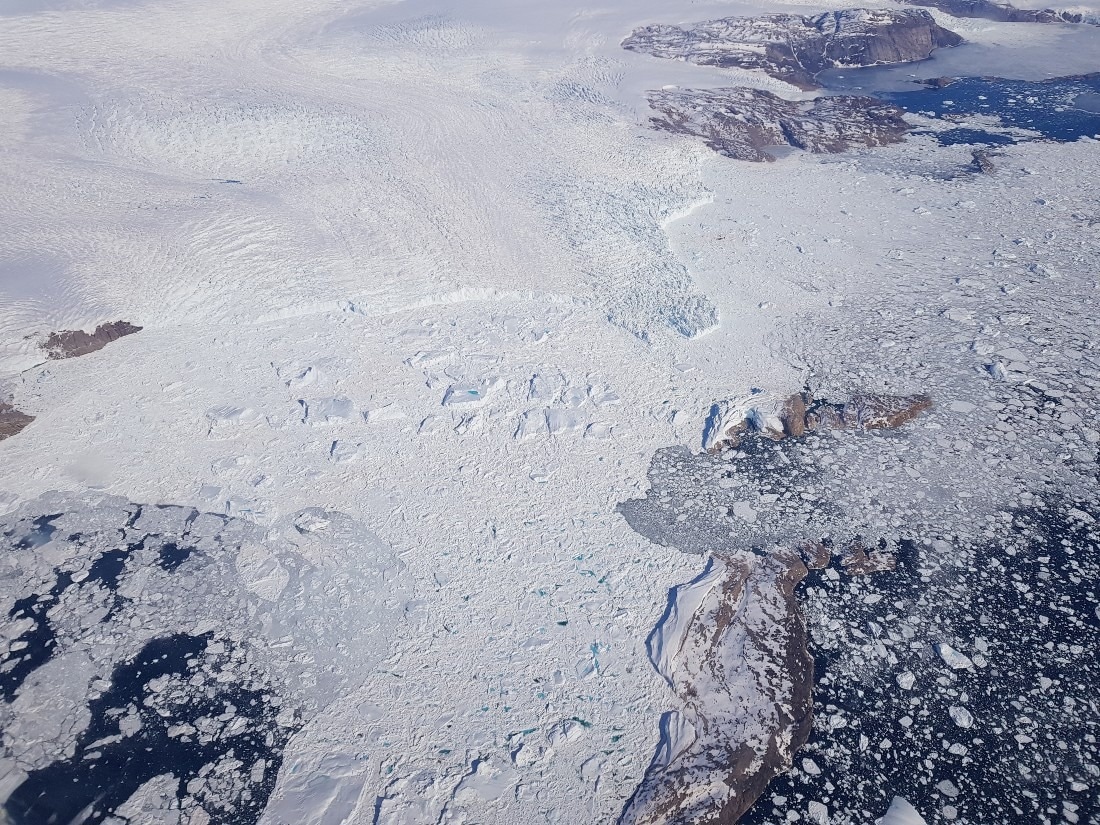Utilizing artificial intelligence, scientists from the Geological Survey of Denmark and Greenland and the University of Copenhagen discovered that meltwater in tunnels beneath Greenland’s ice sheet changes speed and, in some places, accelerates rapidly towards the ocean. This can boost melting, particularly in a warming climate, which is why the study’s researchers believe it is important to monitor.

Image Credit: Baptiste Vandecrux (GEUS).
Greenland’s ice sheet is massive, accounting for nearly half of all fresh water in the northern hemisphere. However, rising global temperatures are causing it to melt and the world’s oceans to rise. As a result, the movement of the ice sheet is closely monitored.
Scientists from the Geological Survey of Denmark and Greenland (GEUS) and the University of Copenhagen’s Niels Bohr Institute carried out a study that shows how ice sheet movements appear to be closely associated with meltwater flow beneath the ice.
The investigators used artificial intelligence to evaluate ice movements, which they can now categorize into four groups based on movement patterns. According to the researchers, this information has been missing. This adds to the understanding of why the velocity of ice at the same location can change over time, which is essential for developing more accurate climate models for, among other things, sea level rise.
With the help of large amounts of satellite data and artificial intelligence, we can identify and map general seasonal fluctuations over large parts of the ice sheet's edge. Not just for one year, but for fluctuations over a number of years as well. Thus, our study provides an indirect look at processes beneath the ice and the connection with meltwater on a large scale. This connection is very important to understand in relation to the warming climate of the future, in which the amount of meltwater will increase.
Anne Munck Solgaard, Study Lead Author and Senior Researcher, Geological Survey of Denmark and Greenland
The research has been published in the journal Geophysical Research Letters.
Tunnels Beneath the Ice
When meltwater from the surface reaches the bottom of the ice sheet, it continues to flow mainly toward the ice sheet’s edge via melted channels. The researchers discovered that the shape of these channels, also known as subglacial drainage pathways, influences the movement of the ice above.
If the channels, which act as a drainage system, are ineffective at diverting water away, the pressure at the bottom rises, reducing friction between the ice and the bottom. As a result, the ice is moving faster toward the ocean. If the drainage system is effective, the ice will move more slowly.
The drainage system, according to Anne Munck Solgaard, is not a fixed array of pipes or channels of a particular size, but rather pathways that form during the melt season. They do this because, while meltwater can expand drainage systems, ice flow works to close them. As a result, the drainage system can be both efficient and inefficient.
This results in four variations in the velocity of ice that we’ve discovered at various locations across the ice sheet. For example, the velocity can slow in the middle of the melting season, when meltwater is plentiful because the drainage system suddenly becomes efficient. Or the system remains inefficient and under high pressure. So, the velocity accords with the amount of meltwater.
Anne Munck Solgaard, Study Lead Author and Senior Researcher, Geological Survey of Denmark and Greenland
As a result, scientists have been able to see where on the ice sheet ice moves throughout the year. This allows them to gain insight into what is happening under the ice and track how it changes from year to year.
“Our results provide a better understanding of how the ice sheet reacts to warmer temperatures and more meltwater, which can help us develop future climate models,” details Dina Rapp, Ph.D. student and co-author of the study.
Huge Amounts of Data Demand Artificial Intelligence
The scientists utilized artificial intelligence to identify and separate movement patterns in thousands of measurements, which became unmanageable for human analysis very rapidly. According to the study’s co-author, Professor Christine Hvidberg of the Niels Bohr Institute, intelligent computing power is becoming increasingly important.
In recent years, the amount of freely available satellite data has exploded. It comes from ESA's Sentinel satellites and America’s Landsat. The data allows us to map the speed of ice in high resolution, both temporally and spatially. It's great, but it also makes it completely impossible to gain a complete overview of the ice's movements and patterns by manually looking through time series. Here, artificial intelligence and heaps of computing power help us see previously undiscovered patterns and connections.
Christine Hvidberg, Professor, Niels Bohr Institute, University of Copenhagen
Since 2016, continuous evaluations from ESA’s Sentinel-1 satellites have been used to quantify the movement of the ice sheet under the Programme for Monitoring of the Greenland Ice Sheet (PROMICE).
Journal Reference:
Solgaard, A. M., et al. (2022) Seasonal Patterns of Greenland Ice Velocity From Sentinel-1 SAR Data Linked to Runoff. Geophysical Research Letters. doi.org/10.1029/2022GL100343.